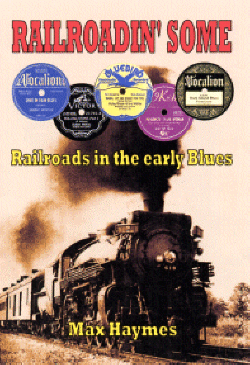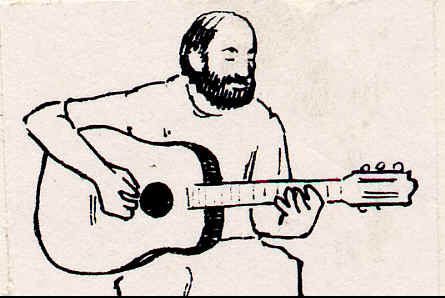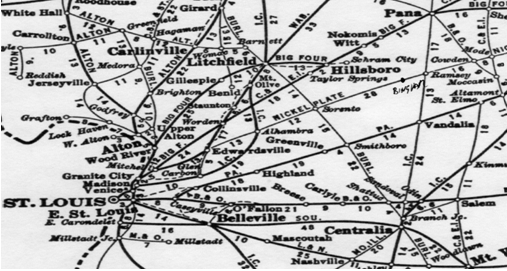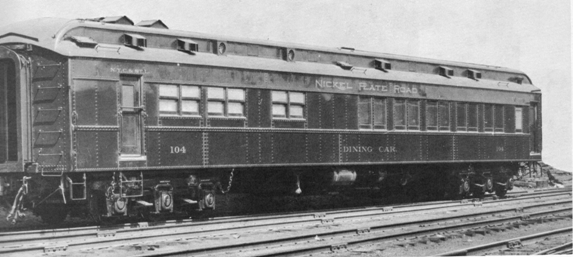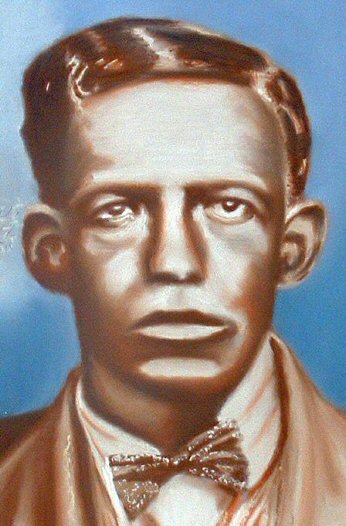
Painting © 2004 Loz
Arkle
Website
© Copyright 2000-2011 Alan White - All
Rights Reserved
Site optimised for Microsoft Internet Explorer
Ida Cox / Old Bingham Town & The
Nickel Plate Road |
|||||||||||||||||||||||||||||||||||||||||||||||||||||||||||||||||||||||||||||
|
[Addendum: "Bingham Town" was used in the 1920s to refer to Binghamtown, Alabama located not far from Birmingham. - thanks to Murray Kirch for the info]
The following is an attempt to answer Garon’s query-some 7 years later! The Taylor recording itself was a really late cover of an early side by Ida Cox in 1923 [Para 12056 Tk.2] which spawned three other versions later the same year. (see Table 1 below)
Ida clearly sings “old Bingham Town”. Table 1
[ * Take 2 is not in B.& G. R. (1997) but is listed on Document DOCD-5322 issued 1995. Some lack of communication here? One for Howard Rye.] All takes (take-1 has not turned up yet) of the Ida Cox song are virtually identical, both lyrically and musically. Only takes-5 and 6 include an additional verse which is a “T is for Texas” variant, some 4 years prior to country singer Jimmy Rodgers picking up on it for his Blue Yodel in 1927, as Steve Tracy pointed out in his notes to DOCD-5573 in 1997.
Hazel Meyers cut a fine version some 3 months later and she slavishly copies the earlier takes by Ida Cox. Although in a different order but she uses the “Bingham Town” verse whilst omitting the “T is for Texas” lines. Four days later Bessie Smith’s version followed the Myer’s order of verses except omitting the “Bingham Town” verse altogether. This seems to imply a personal biographic detail (not always the case) regarding a ‘window’ on the earlier life of Ida Cox. Hazel Meyers placed this verse as the penultimate one in her song, presumably as it had no personal interest or meaning for her. Chicago Bound Blues is credited to Lovie Austin who was often the excellent pianist on earlier Ida Cox recordings. Now, to the nub of Paul Garon’s query. Although not on early 20th. century maps, a 1995 road atlas does include a Bingham in Illinois. It is only recently (2010!) that I came across a copy of McNally’s 1928 Handy Railroad Atlas of the United States. Part of the criteria for this excellent and essential publication (to a Blues historian) is that only “towns of 2,000 population or over on railroads are shown on this map [of Illinois] (3) This figure varies for other state maps included, between 500 and 5,000, depending on the population of a particular state in 1928. So Bingham in the late 1920s was a very small burg indeed. Yet it was served by a major railroad (the town was probably just a whistle stop) when presumably Ida Cox was living there. The New York, Chicago & St. Louis RR-better known as the Nickel Plate Road-running from west to east leaving St. Louis, Missouri, and via Bingham crosses Ramsey, Illinois, which was a stop on the Illinois Central (I.C.). The latter headed north for Chicago or southwards through Centralia, Illinois, (of Estes fame!) down to Cairo, Illinois, and on into Tennessee and then Mississippi on down to New Orleans. Bingham is situated some 10 miles due south-west of Ramsey and nearly 20 miles north-west of Vandalia, Illinois; both in Fayette County
Ida Cox could have easily got a train from Chattanooga, Tennessee-where she spent some considerable time and recording a Chattanooga Blues-up to Ramsey on the I.C. changing over to the Nickel Plate for a very short ride to Bingham. Maybe she met the man in her Chicago Bound Blues there and decided to live in the little town for a while. Ms. Cox who was from Toccoa, Georgia, in Stephens County, spent some considerable time in northern cities such as Chicago and New York where she recorded extensively between 1923 and 1940. Using the Nickel Plate Road to nearby Ramsey, Ida Cox could catch an I.C. train direct to the Windy City.
Like many of her contemporaries this vaudeville-blues singer was a ‘ramblin’ woman in her younger days. Jaybird Coleman’s words;
are more typical than not. As well as her sojourns in Chicago, etc. she also “frequently toured as [a] feature artist on [the] vaudeville circuit down [the] East Coast through [the] 20s;”. (5) But despite being one of the 4 ‘hard hitters’ of the genre along with Bessie Smith, Ma Rainey and Clara Smith-and just as successful- she is not featured in the Guinness Blues Who’s Who. Although her regular early pianist and sometime husband, Jesse Crump, is! Ms. Cox is only mentioned ‘en passant’ in the latter’s entry. Addendum Nickel Plate Road
“In the late 19th. century, nickel was used interchangeably with silver to describe something of prestige or quality. The glittering prospects and substantial financial means of the Nickel Plate’s founders prompted Ohio newspaper editor F.R. Loomis of the Norwalk Chronicle to label it ‘the great New York and St. Louis double track, nickel plated railroad’ in an editorial published March 10, 1881”. (6) A wide-spread story that the railroad laid its route with nickel plated tracks is almost bound to be apocryphal-for the prohibitive cost alone. The railroad was sold, for $7,000,000, three days after opening in 1881 to William H. Vanderbilt who owned the New York Central RR., a powerful rival to the Nickel Plate and regarded the latter as “one of those nuisance railroads, built parallel to the Central’s Lake Shore route for 500 miles between Buffalo [New York] and Chicago.” (7) Facing probable anti-trust charges in the courts, the NYC sold the Nickel Plate in 1916. (8) As already noted, the latter ran from St. Louis, crossing the I.C. at Ramsey (where Ida Cox could leave the Nickel Plate from Bingham, Illinois, to catch an Illinois Central train to Chicago) and headed for Buffalo, NY. Copyright Ó Max Haymes 2011__________________________________________________________________________ Notes:
Illustration of Ida Cox from the collection of John Tefteller and Blues Images with permission, www.bluesimages.com Bibliography:
Transcriptions by Max Haymes
Website © Copyright 2000-2011 Alan White. All Rights Reserved. |

